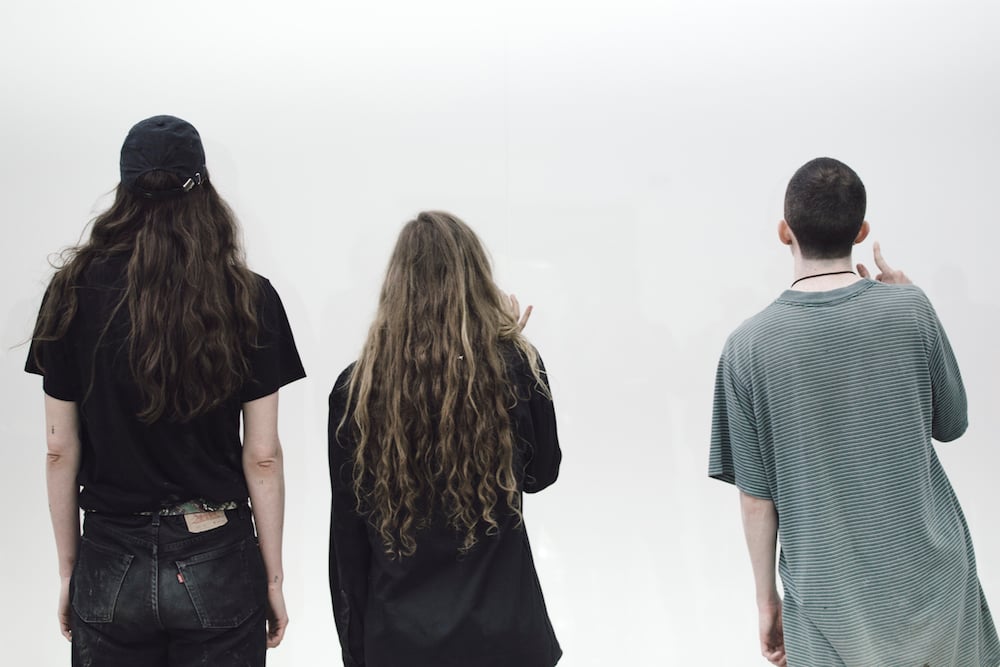
Joining the tide of popular acclaim that has greeted Anne Imhof’s stark, provocative, and darkly empowered exhibition for this year’s German Pavilion, the jury of the 57th Venice Biennale awarded the Golden Lion for Best National Participation to Germany. In bestowing the award amid enthusiastic applause, the president of the jury, Manuel Borja-Villel, praised her show as “a powerful and disturbing installation that poses urgent questions about our time.”
Guarded by menacing Dobermans behind a fence, Imhof’s Faust—which drew the longest lines of the opening preview—features a cohort of intense, black-clad performers who engage visitors in eye contact while dancing, marching, and writhing in an antiseptic environment that resembles some mix of a prison, hospital, and S&M dungeon. There is at once a feeling of militancy and creativity—it’s as if an art school had been bitten by the zombie bug. The pavilion was by far the most buzzed-about contender for this year’s prize, and had been widely expected to win.
Anne Imhof receiving the Golden Lion at the Venice Biennale. Photo by Andrew Goldstein.
In receiving her shining award, which she took from its red velvet box and held aloft alongside Susanne Pfeffer, commissioner of the pavilion and director of Kassel’s Fridericianum, Imhof described her show as a statement of defiance and pride.
“It is giving a very transparent view on the past,” she said, but also stands “for the future, for the grace of thought, for gender diversity, for the pride of women… to know what to stand up for, and when to raise our fists.” Clad in a black baseball cap and black leather jacket, the 38-year-old artist thanked her performers—“If this work moved you, it is because they have moved you”—as well as her Berlin galleries, Isabella Bortolozzi and Daniel Buchholz.
Meanwhile, the Golden Lion for the best artist in “Viva Arte Viva,” the international exhibition curated by the Centre Pompidou’s Christine Macel, was awarded to the 77-year-old German artist Franz Erhard Walther for his vibrant participatory fabric installation in the Arsenale. The Silver Lion for a promising young artist in the group exhibition went to the Egyptian-born, Cairo-based multidisciplinary artist Hassan Khan for his Composition for a Public Park, an immersive sound installation located in the garden at the end of the Arsenale.
Franz Erhard Walther with his Golden Lion-winning installation. Photo by Lorena Muñoz-Alonso.
Walther, who was born in 1939 amid the outbreak of World War II, presented three works from his 1980s “Wallformation” series, one of which can be walked on and two wall pieces that the viewer is invited to manipulate.
“Oh, that’s very fine,” the dashingly attired artist said in accepting his award, sniffing back tears. “I’m very touched that I got the prize. I didn’t expect it—it’s a real surprise to me.” (Perhaps he should not have been completely surprised: Borja-Villel, the president of the prize jury, is also the director of the Museo Reina Sofía, where a major retrospective of Walther’s work is currently being staged.)
Addressing the assembled audience of artists, curators (including former Biennale curator Robert Storr), and other dignitaries, Walther encouraged everyone to visit his installation. “If you go see my show it’s possible to activate it,” he said. “If you do, it will turn all of you into an artwork.”
The most unexpected of the Biennale’s winners, Khan was praised for “the special and imaginative relationship established with the spectator” through his installation, which “beautifully intertwined the political and the poetic.” Onstage with the jury, the artist said he was “very honored and very happy,” adding, “I feel incredibly privileged to be able to do what I’m doing, because it’s actually very difficult to be an artist and have that conviction in this world.”
Hassan Khan’s sound installation won the Silver Lion. Photo by Ben Davis.
This year, the jury—comprised of independent curators Francesca Alfano Miglietti and Amy Cheng, the writer Ntone Edjabe, Tate senior curator Mark Godfrey, and Borja-Villel—also bestowed its maximum allotment of “special mentions.” The secondary prizes for participants in “Viva Arte Viva” went to the American video artist and choreographer Charles Atlas and Petrit Halilaj, who represented Kosovo in the Biennale four years ago. The secondary prize for a national pavilion was given to Brazil for Cinthia Marcelle’s show, curated by Jochen Volz.
For the past several years, the Biennale has used the prestigious Golden Lion for Lifetime Achievement to embrace an accomplished older female artist whose contributions had gone without due recognition for too long. (Previous recent winners include Elaine Sturtevant, Maria Lassnig, and Marisa Merz.) This year, that prize went to Carolee Schneemann, the American painter and performance artist best known for landmark pieces in the feminist art canon like Meat Joy (1964) and Interior Scroll (1975).
Climbing the stairs to the podium with a shiny purple cane and a striking black-and-gold Etro coat, Schneemann accepted her award from Macel and Biennale commissioner Paolo Baratta, saying, “Christine, I know how hard it was for you to put this lion in my hands.” Macel, for her part, described Schneemann as “an incredible artist who changed the definition of art by bringing together painting and performance art,” and thanked her for her “sense of persistence and sense of non-compromise.”